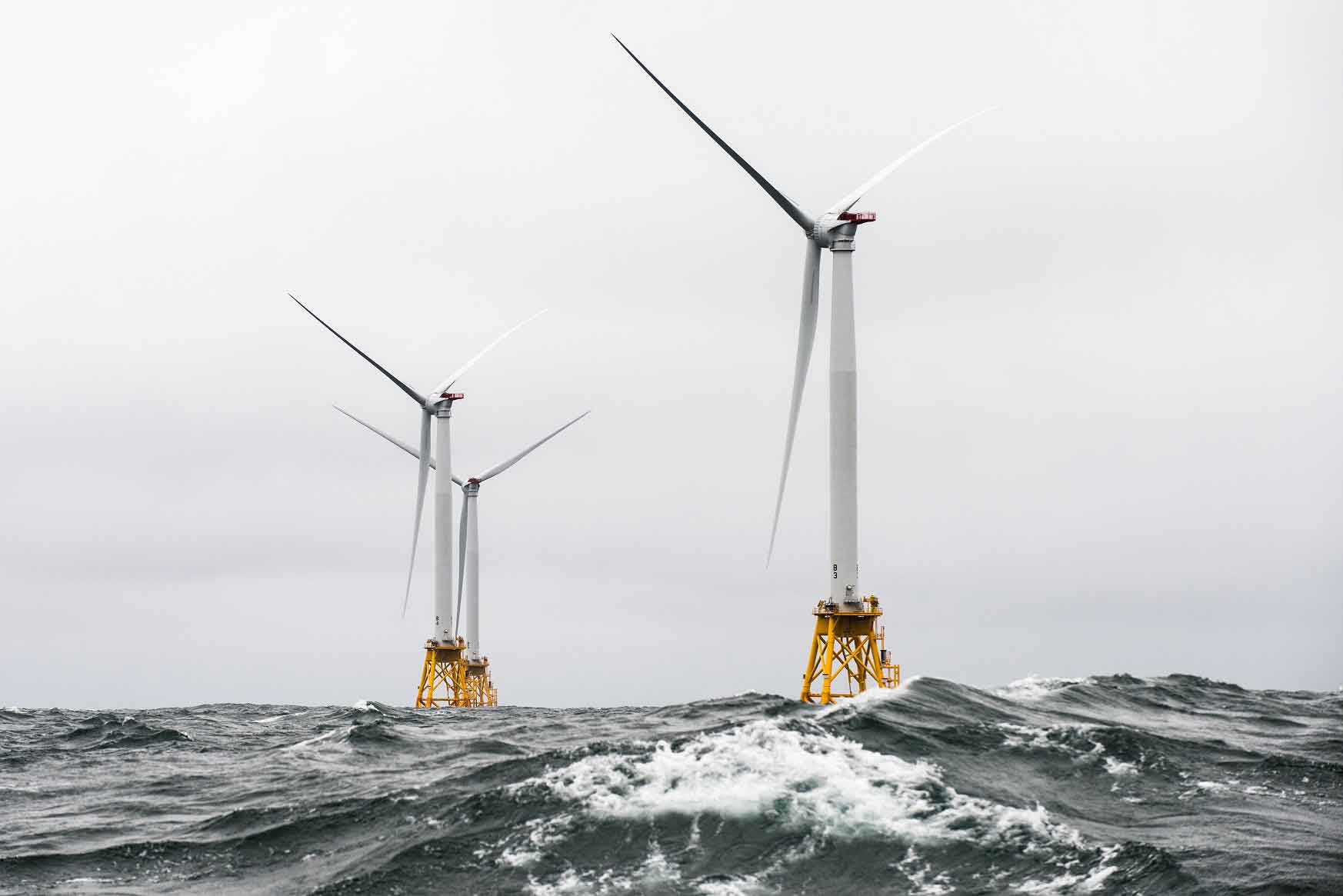Gulf Coast Renewable Energy Survey to Explore Potential of Offshore Wind

The first U.S. offshore wind farm is located off the coast of Block Island, Rhode Island. Photo by Dennis Schroeder/NREL 40389
Offshore oil and gas drilling was founded on the U.S. Gulf Coast no stranger to offshore manufacturing—and now, a new NREL survey is designed to determine if the region can transform 50 years of offshore manufacturing and deployment expertise into a thriving offshore industry. Funded by the Bureau of Ocean Energy Management, this project will examine the feasibility of various potential offshore energy resources in the Gulf of Mexico.
The DOE’s Wind Vision Report aims to install 86 million gigawatts of offshore wind by 2050, with the Gulf Coast playing a large role. These states—Florida, Texas, and Louisiana particularly—will contribute 10%, or 8.6 gigawatts, of offshore wind energy to help achieve the Wind Vision’s goals.
The Gulf offers a number of advantages for offshore wind, including shallow water that makes turbine installation easier, warm waters, higher accessibility, and a close proximity to existing offshore oil and gas infrastructure. However, the region’s lower wind speeds present a challenge, and hurricane-resistant turbine designs and survival strategies may be required to lessen the increased risk of severe tropic cyclones.
To determine the levelized cost of energy for Gulf Coast offshore wind, NREL’s Suzanne Tegen and Walt Musial will use the NREL-developed geo-spatial offshore wind cost model, which assesses variables like water depth, wind resource, and distance to port. Current scenarios show the levelized cost of energy may dip below $100 per megawatt hour by 2025 in some Gulf sites.
Researchers will also undertake a site-specific economic analysis to determine which offshore wind locations offer the most promise for developers. A job impact analysis, performed using NREL’s Jobs and Economic Development Impacts model, will estimate the economic impact of construction and turbine operations.
Offshore wind is not the only potential renewable energy source the survey will explore. Researchers will also evaluate the feasibility of wave and tidal energy, ocean current energy, ocean-based solar energy, ocean thermal energy, and deepwater source cooling.

